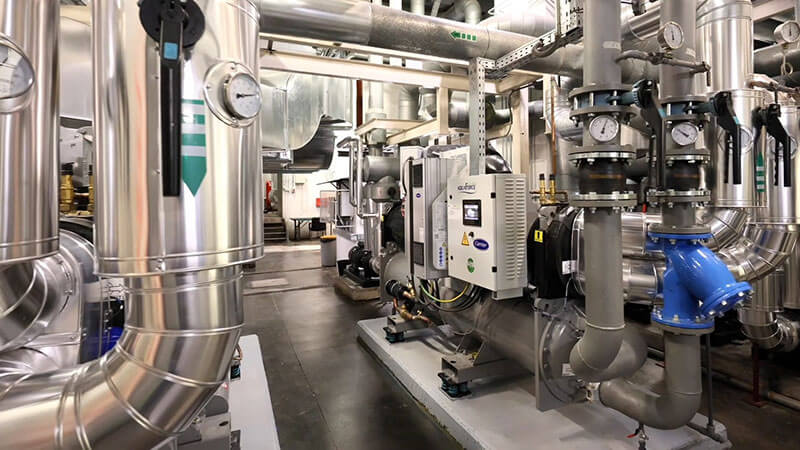
Teatro real, Madrid

Project description
The Teatro Real, located opposite the Royal Palace of Madrid, is an emblematic, monumental building which has been declared an "Asset of Cultural Interest" and is considered to be the country's leading institution for music and the performing arts.
It has an area of 80,000 m2, is 78 metres tall and dates back to 1850. One of its core values is to become the most sustainable theatre in Spain.
"It has been challenging work but we managed it in a timely manner and have fundamentally achieved the savings. The Teatro Real is the first building to be entered on the energy savings certificate register of the Energy Transition Ministry."
"We have achieved this because we used products and services of the highest quality and our objective is to become a zero-consumption building."
Nuria Gallego
Director of Infrastructure and General Services
Teatro Real
Challenges and solutions
The project consisted of updating the heating and cooling system for the entire building with the aim of increasing the energy efficiency and reducing the theatre's environmental impact. The new system covers all the heating, cooling and domestic hot water needs of the installation.
It is comprised of three technologies.
- Water-cooled chillers, with screw compressors and speed regulators.
- Air-cooled reversible heat pumps, with scroll compressors and a high seasonal energy efficiency.
- Air-cooled non-reversible heat pump, with scroll compressors and a high water production temperature.



- Fully electric system, with no need for fossil fuels
- Energy savings of 48% with the installation
- Maximum reliability
- 2 x AquaSnap® 30RQP
- 3 x AquaForce® 30XWV
- 1 x AquaSnap® 61AF

This project was based on the pillars of decarbonisation for thermal installations.
- Use of refrigerants with a low global warming potential
The refrigerant used and the charge included in the units account for 6% of the units' global environmental impact according to our lifecycle analyses. By using refrigerants with a low global warming potential, we can directly reduce this impact.
- Use of units with a high energy efficiency
The use of energy accounts for 88% of the units' global impact. Increasing the level of energy efficiency reduces the energy consumption level and the associated CO2 emissions. It is essential that we utilise units where this parameter is as high as possible in order to reduce the indirect impact by up to 48%.
- Electrification with heat pumps
The heat pump units are considered to be renewable energy sources and can help to reduce the dependency on fossil fuels. Another key aspect is that we not only need to design energy-efficient solutions, but also have to make sure that they stay efficient during their entire service life by way of maintenance plans and control systems.